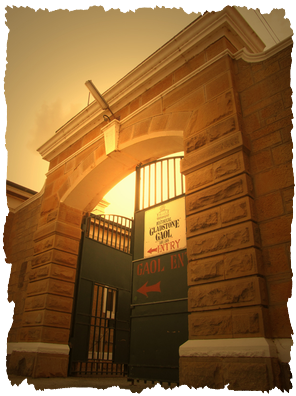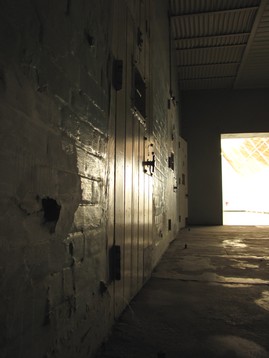Adelaide Ghosts and Hauntings - Paranormal Field Investigators
History of Gladstone Gaol
Investigations > Gladstone Gaol
GLADSTONE GAOL
1881 - 1975






 THE HISTORY
THE HISTORY
Gladstone Gaol was built between 1879 -1881 and was used for inebriates, debtors and other prisoners. It was also used as an internment camp in the early years of World War Two for Italian and German nationals, and later as a military detention barracks. The gaol was also used as a medium security prison for prisoners on good behaviour.
The Gaol was officially opened on the 8th June 1881.The first prisoner to be incarcerated at Gladstone Gaol was Mr Charles McCarthy of Adelaide. The first female prisoners were admitted on the 8th August 1881. The gaol was eventually closed in 1975 because of its out-dated facilities. It reopened in 1978 as a tourist attraction.
In the ninety-four year history of the Gladstone Gaol there were twenty-five escape attempts. All prisoners who made escape attempts were recaptured.
Life for the prisoners in the 19th century was not easy, there was no rehabilitation for prisoners, the female prisoners were given no special treatment and were required to observe the same rules as the male prisoners and could expect the same severe punishments if the rules were broken.
There were prison workshops and the inmates were trained in a number of different trades. Prisoners made garbage cans, mop & buckets and steel mugs in the sheet metal shop. There were also large vegetable gardens and an orchard, which provided prisoners with an abundance of fruit and vegetables. Produce from these activities was used in the Gladstone Gaol and the surplus was sent to the Port Augusta and Adelaide Gaol.
Daily routine of the Gladstone Gaol:
7.00am - Prisoners woken and served breakfast in their cells.
7.30am - Leave cells, empty toilet buckets & shower.
8.00am - Parade in exercise yard, work details issued.
11.30am - Collect lunch and return to cells.
1.00pm - Return to work assignments.
4.15pm - Finish work, shower. Collect evening meals from the kitchen and return to cells.
9.00pm - Lights out.
Prisoners were allowed to have visitors once a fortnight and write one letter a week.